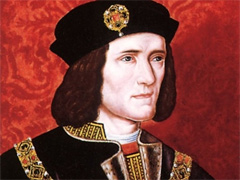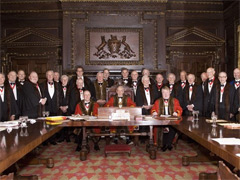


Where is it?
Woolwich is in the Royal Borough of Greenwich, south east London, at the very end of one of the DLR lines. It borders infamous Thamesmead to the north, and the even more notorious Belmarsh high security prison to the west. But before that scares you off, it also benefits from having some pretty bits by the river, and since the arrival of the DLR transport links have improved greatly. A new Crossrail station by the name of Royal Arsenal Riverside is set to open in 2018, connecting this part of town to Canary Wharf and the City. It also benefits from the free Woolwich Ferry which takes passengers across the river, and the night bus takes around 50 minutes from Tottenham Court Road. London City Airport is two stops away, although we’ve yet to figure out who uses this airport and where they fly to.
Tell me more
Remains of a fort prove there has been life here since the days of the Roman Empire. The name ‘Woolwich’ means port used to trade wool, and though no evidence of the wool trade has been discovered, there was plenty of farmland in the area which would have been ideal for grazing sheep. And speaking of the surrounding greenery, in days of yore the roads surrounding Woolwich Common and Shooters Hill were insalubrious to say the least, with highwaymen taking advantage of passing carriages. They did so at their own peril, as those who were caught were hung in a gibbet at Shooters Hill, to serve as a warning to any would-be thieves.
In 1512 the egomaniac Henry VIII ordered the building of the Royal Dockyard, for the purpose of accommodating his beloved ship the Great Harry, aka Henri Grace à Dieu. The Royal Laboratory was established in 1695; despite the name this was a factory that produced ammunition and weapons.
The first barracks were built in the early 18th century, and Woolwich Common began to shrink as army quarters appeared. Meanwhile the Royal Laboratory – re-named the Royal Arsenal - grew in size and manpower; during World War I over 70,000 people were employed here. Woolwich also became the site of the Royal Military Academy, where pupils were taught military science, languages and drawing.
For centuries it had prospered, but the twentieth century wasn’t kind to Woolwich. The Dockyard had closed in 1869; numerous warehouses followed suit, such as the Siemens factory in 1901, making 9000 people unemployed. After World War II the need for arms diminished, and local manufacturers began making parts for trains and other machinery instead. The Royal Arsenal finally closed in 1967, and much of the land went on to become part of new town Thamesmead.
To the east, heading towards Charlton, the Thames Barrier is clearly visible: nine curved steel gates erected in 1982 that have the purpose of saving London from flooding should the tides become over-excited, avoiding a repeat of the 1953 catastrophe that claimed the lives of 300 people.
\n\nWoolwich trivia
Ever wondered where the north London football team Arsenal get their name from? The team was actually started by local workers at the Royal Arsenal in 1886, but they moved to Islington in 1913. The reason? Their faraway location meant few people turned up to watch them play, so very little money was trickling in to the club. When they were bought by an entrepreneurial businessman he uprooted them to a more visitor-friendly, profitable neighbourhood.
Other facts you might want to surprise your dinner guests with: the UK’s first McDonald’s opened here in 1968, and Woolwich is fortunate enough to be home to the biggest Tesco supermarket in Europe.
In the news
Woolwich made headlines in May 2013 when a soldier was beheaded in broad headlight by two religious fanatics. The world looked on in horror as shocking images of the two attackers speaking to the camera with their hands covered in blood were broadcast on TV and via the internet. But as gruesome as the crime was the area isn’t known as a hotbed of religious or racial tension. While there’s an obvious police presence, locals claim it’s no more dangerous than other parts of London.
\n\nWhat is there to do?
If you have an interest in warfare then Firepower – the Royal Artillery Museum is well worth a visit, and even if you don’t venture inside you can’t miss the cannons and the large tank on display here. The Dial Arch pub is a large gastropub with a garden serving craft beers. Powis Street is where most of the shops are, and while there are a fair few Cash Converter type outlets and fast food shops there are plenty of high street stores too. It’s a busy place, and the town centre’s Wetherspoon’s pub, the Great Harry (so-called after the tudor monarch’s ship) is usually packed after 5 pm.
Can I afford it?
Generally speaking the housing stock is made up of Victorian terraces, 1930s housing, ex-local authority and purpose built flats, some of the nicest ones are near green spaces, so heading towards Plumstead Common, Woolwich Common and Shooters Hill. New smart apartment blocks by the river like The Warehouse are not cheap – the aforementioned Crossrail line will link to the City for a reason.


